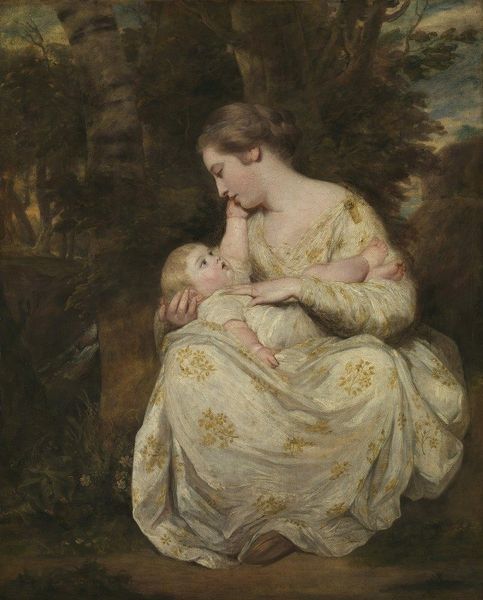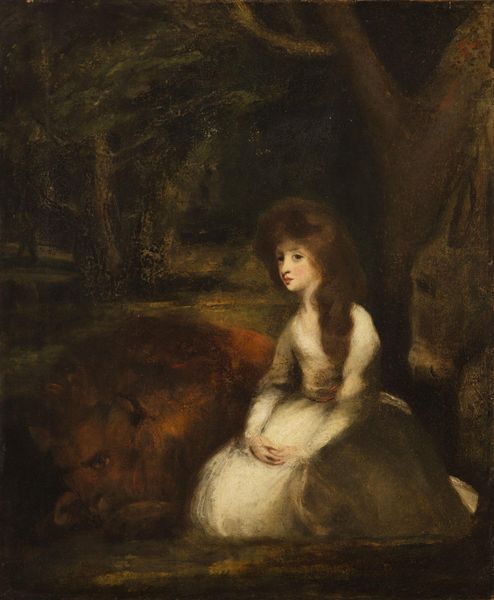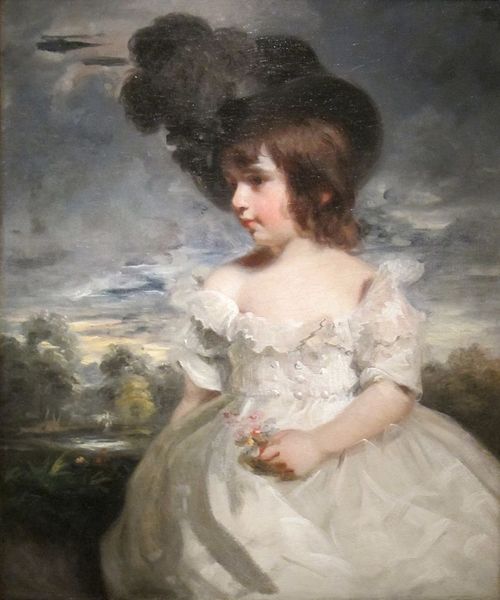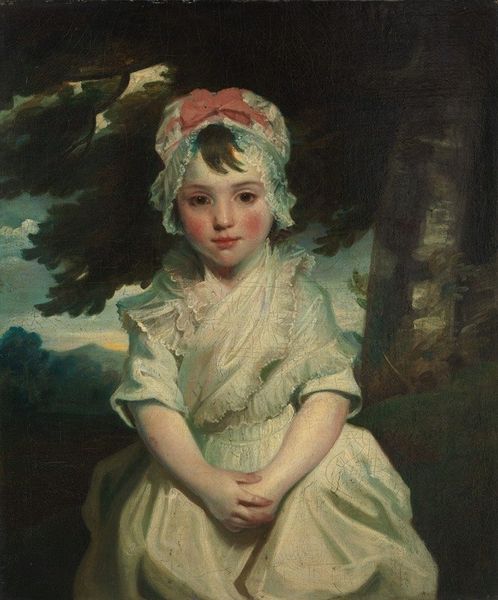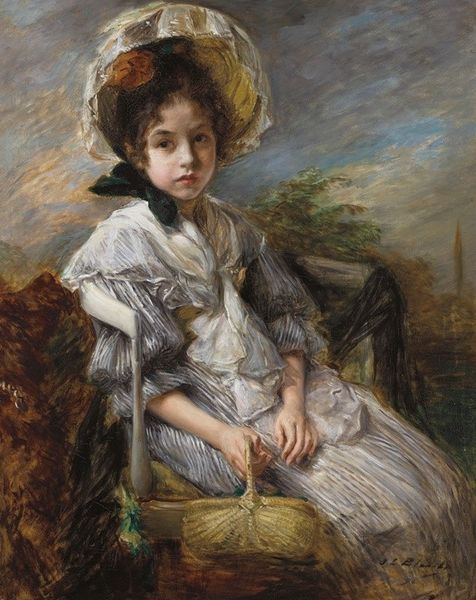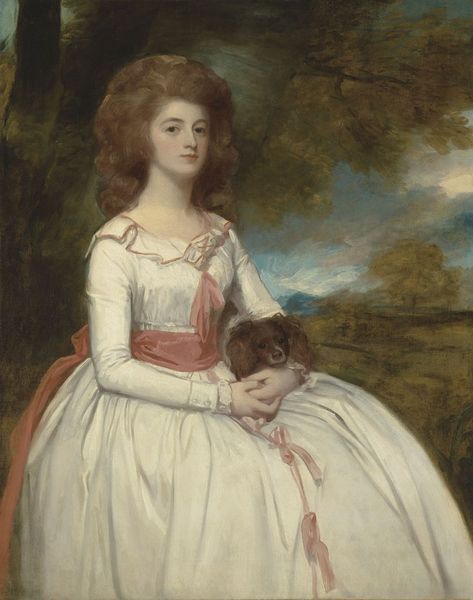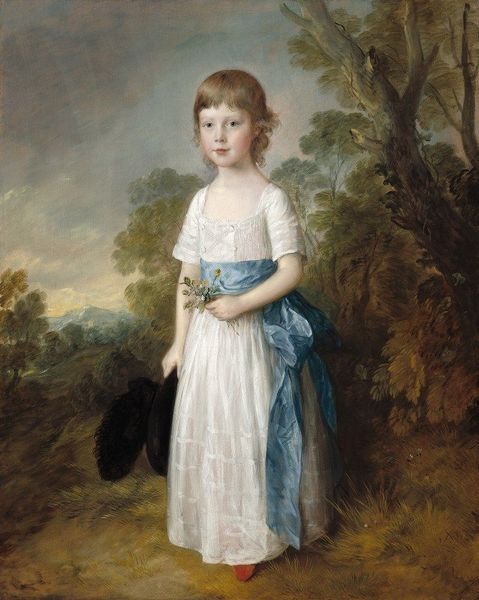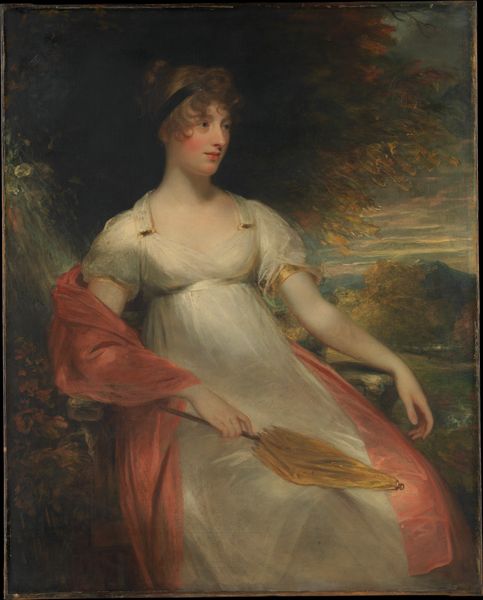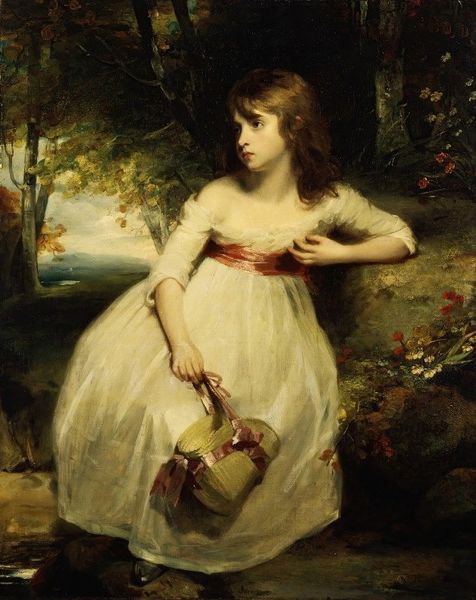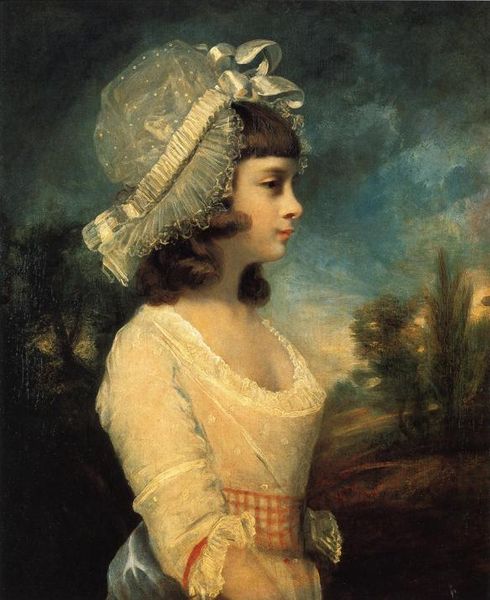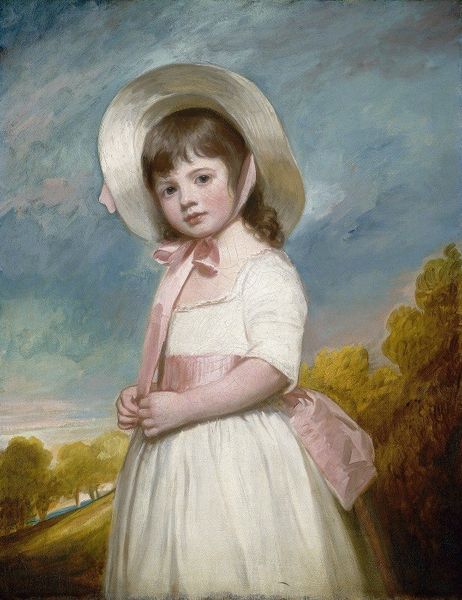
Copyright: Public domain
Editor: Here we have Joshua Reynolds’ "The Age of Innocence," painted in 1788. It's an oil painting that evokes a feeling of gentle serenity. The softness of the brushstrokes and the muted color palette really contribute to that mood. What do you see when you look at it? Curator: I am struck by the composition; it offers a powerful study in contrasts. Observe how the artist juxtaposes the delicate features of the child with the broader, less defined strokes of the landscape. This tension guides the viewer's eye, compelling an evaluation of how surface texture and tonal value can inform meaning. Editor: That's a great point! I hadn’t considered how the contrast affects the viewing experience so deliberately. Do you think the landscape serves to isolate or frame the child? Curator: It does both. The rough brushwork and darker values that frame her highlights the smooth, almost porcelain finish of her skin. Consider the child’s seated pose and hands clasped: a clear geometric focus in contrast to the verdant surroundings. How do you feel that geometric stillness contributes to the feeling of “innocence?" Editor: I think the stillness speaks to a kind of purity, a lack of self-consciousness that adults often lose. It creates this idealized view of childhood, almost untouchable. Curator: Precisely! The artist emphasizes the geometrical arrangement of shapes over a more emotionally affective or anecdotal engagement. One may argue that this piece exemplifies Reynolds's commitment to academic principles within the Romantic era. The composition and tonal relationships achieve an aesthetic end that favors restrained elegance over the immediacy of emotional display. Editor: So, it’s less about sentimentality and more about the arrangement of forms creating that impression? I'll definitely look at paintings differently now. Thank you for your perspective. Curator: The painting underscores that the meaning arises as much from the artist’s deliberate choices about composition and texture, which creates an intended atmosphere, in this instance innocence, as it does from cultural readings. An image that we believe we have interpreted fully always offers itself anew.
Comments
No comments
Be the first to comment and join the conversation on the ultimate creative platform.
